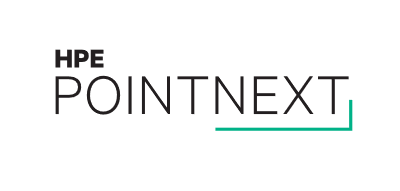Search posts by keywords:
Filter posts by author:
Related Reports
Related NEAT Reports
Other blog posts
posted on Apr 18, 2017 by Dominique Raviart

We recently talked to HPE Technology Services (TS) about its recent Pointnext branding campaign. Despite the divestment of its Enterprise Services unit, HPE has retained very significant IT services capabilities, provided through Pointnext. Technology Services is a sizable unit with FY16 revenues of ~$7.9bn (for the period ending 31 October 2016), and has a headcount of 25k across 80 countries.
It would be tempting to view Pointnext as the product-related services arm of HPE, providing mostly support and IT consulting services, all within the context of product “attach” sales (i.e. service sales tied to hardware sales). And indeed, product support (and the attach sales model) remains a key element of the services provided by Pointnext, with IT consulting services providing a small part of the overall revenue.
Nevertheless, the services portfolio under the Pointnext brand is broader than product support and consulting capability. Pointnext wants to accompany the full project lifecycle: capabilities include consulting services, professional services, and run services (“operational” services). So how will Pointnext rebalance its service portfolio mix away from support? HPE won’t say but we assume consulting (directly) and professional services (both directly and with the help of the indirect channel/VARs) are a priority.
With the Pointnext brand launch, the business has also had a portfolio refresh on the digital transformation theme, largely around IT infrastructure, in areas including cloud computing (application modernization and cloud migration) and hybrid cloud (“hybrid IT”), big data and analytics, IoT edge devices (“Intelligent Edge”), and IoT.
With its refresh around digital transformation, Pointnext is counting on HPE’s own hardware and software portfolio transformation. It is also investing in expanding its portfolio – e.g. in advisory services (emphasizing workshops and assessments), and run services (pushing aaS consumption models), together with its cloud computing partner Microsoft with Azure.
Pointnext’s delivery is also evolving, with the unit moving further towards offsite delivery. Currently, ~ 60% of its delivery is done remotely. This number will increase, with more CoEs being created onshore and offshore to drive a factory approach, even for systems integration activities such as migration of mainframes to open servers, and to private/hybrid/public clouds. Meanwhile, Pointnext continues to hire onshore for its advisory services.
The topic of delivery is closely related to that of VARs and partners, which provide professional services for installing HPE’s products, and for providing L2 and L3 support. Pointnext highlights that partners remain a core element of its go-to-market approach and continues to create repeatable and packaged offerings that can be resold by partners. Examples include strategic offerings HPE Flexible Capacity, an aaS model for onsite servers/datacenters that is supported by HPE Datacenter Care.
In many ways, with its focus on packaged offerings, its inclusion of the indirect model, and its “attach” business model, Pointnext differs from most tier-one IT services competitors. Dynamics are at work in IT infrastructure services towards more packaged, standard offerings. So, let’s welcome the new HPE Pointnext brand as a vendor focused on making that happen.
